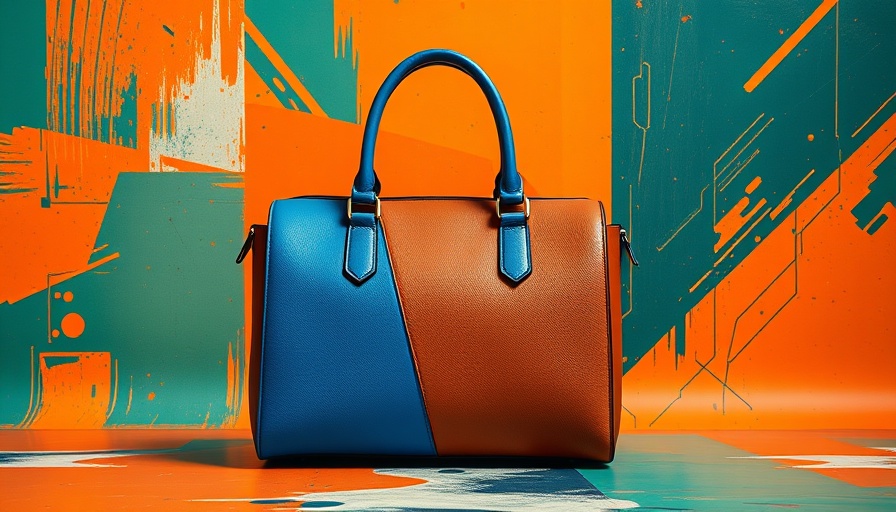
The New Wave of Chinese Manufacturing on TikTok
In a bid to connect directly with consumers in the US, Chinese manufacturers have taken to TikTok with a revolutionary approach that blends marketing, manufacturing insight, and a bit of protest. Recent viral videos showcase young Chinese spokespersons, often clad in simple attire, revealing the inside story behind luxury brands that many people believe create their products in Europe or North America. Instead, they argue, these goods are crafted in China, often underappreciated and poorly compensated for their skilled labor.
Exposing the Hidden Manufacturing Costs
One video highlighted a young man lifting an expensive Hermès Birkin bag, pointing out the irony: the same leather and craftsmanship goes unrecognized while consumers pay exorbitant prices. "You recognize them: Hermès, Louis Vuitton, Prada, Gucci—all crafted in our workshops," he states, drawing attention to the disparity between manufacturing costs and retail prices. This trend not only emphasizes the potential inequality in global supply chains but also serves as a wake-up call for consumers to understand where their products truly come from.
Connecting Emotionally: The Power of Direct Appeal
As Ivy Yang, an e-commerce expert from Wavelet Strategy, puts it, these videos symbolize a significant change in the narrative surrounding Chinese manufacturing. With factories creating content studios, the goal is to connect with consumers on a human level, cutting through the traditional middlemen. By amplifying their voices through platforms like TikTok, these companies present their labor not just as a statistic but as a story—one of artisans who deserve recognition.
A Social Media Revolution—What’s Behind the Trend?
The recent push towards TikTok isn’t solely a marketing strategy; it stems from significant frustration and economic necessity. With tariffs imposed during the previous administration, many producers have faced barriers in connecting with the US market. Therefore, TikTok becomes a tool to circumvent these obstacles, promoting products at lower prices than traditional retailers. This blend of necessity and savvy marketing reveals a unique survival strategy in an increasingly digital economy.
The Emergence of Authenticity in Marketing
As the trend continues to grow, the underlying message is resonating: authenticity matters. By showcasing raw manufacturing processes, discussions around labor, and price comparisons, these videos stir conversations around consumer ethics. TikTok offers the perfect platform for this type of engagement, where users aren’t just passive spectators but active participants in a cultural conversation about what it means to support ethical manufacturing.
Challenges and Opportunities for Chinese Manufacturers
While the TikTok strategy presents new opportunities, it is not without its challenges. The rapid virality of content raises concerns regarding misinformation and authenticity. Some viewers question the claims made regarding production costs and methodologies, leaving manufacturers to tread carefully in how they market their goods. Moreover, how to scale this approach while maintaining quality and authenticity poses a significant dilemma for these companies.
Transforming Perceptions Through Social Media
This new presence on social media is a cultural shift for many manufacturers who were traditionally kept in the shadows of larger corporations. With increasing numbers of creators speaking openly about their direct relationships with consumers, they hold the power to reshape perceptions around ‘Made in China’ labels. If these efforts can lead to greater consumer awareness and appreciation for craftsmanship, it could mark a pivot point towards more ethical and transparent production standards.
Future Predictions: The Path Forward
As these trends unfold, it’s likely that more traditional manufacturers will also begin to embrace these social media strategies, realizing that transparency could be their most significant asset. Companies that successfully navigate this landscape may redefine what luxury means, breaking down class distinctions that rely on exclusivity at the expense of ethical production.
In the end, this viral phenomenon challenges consumers to rethink their purchasing decisions. As they learn where their luxury goods come from, the call to support the artisan behind the craft is becoming stronger.
Take action now: Next time you shop, consider choosing brands that appreciate and acknowledge their labor force—supporting direct-from-factory initiatives might be a way to embrace sustainable luxury.
 Add Row
Add Row  Add
Add 
 Add Element
Add Element 

Write A Comment